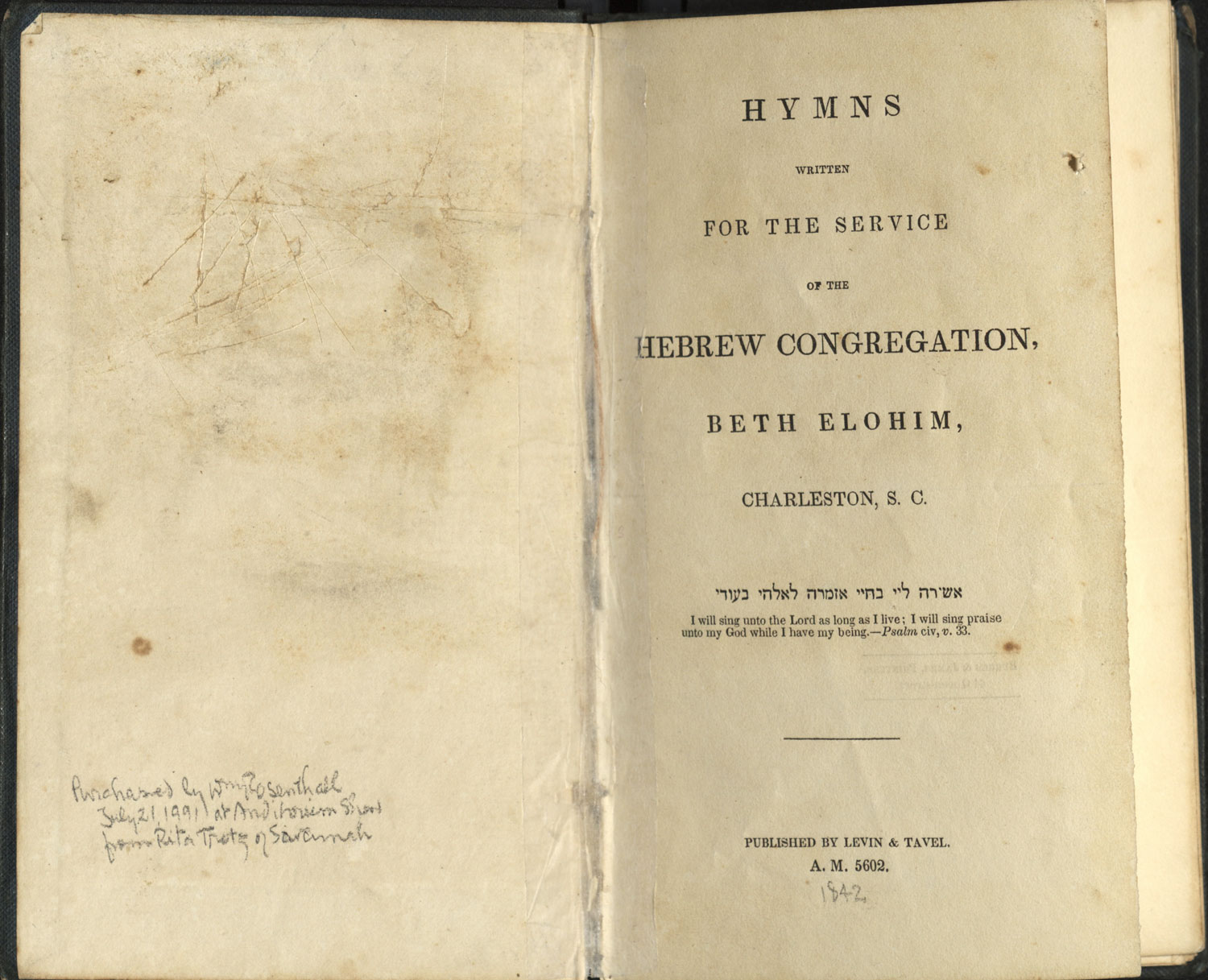Poet Penina Moïse (1797–1880) wrote 60 of the 74 hymns in this book, likely the first hymnal composed for a Jewish congregation in America. Published in Charleston, South Carolina, in 1842, the volume was expanded to include 190 of Moïse’s hymns when the second of four editions appeared in 1856. Thirteen of them were reprinted in the Union Hymnal, still in use by the Reform movement in 1932. Moïse not only wrote lyrics for Kahal Kadosh Beth Elohim, but poems about the synagogue as well. After the congregation’s original building burned in 1838, she wrote “A Poetic Homily on the Late Calamity”; when a new structure was erected two years later, she composed “On Beholding the New Synagogue.” “The synagogue was to her an inspiration,” wrote Lee Cohen Harby (1849–1918), a granddaughter of Jewish Reform leader Isaac Harby (1788–1828), “and a theme of all sweet song.”

Moïse was also devoted to the education of the synagogue’s youth. In 1838, the year of the fire, Sally Lopez (1806–1902) founded Charleston’s first Jewish Sunday school; in 1842, after the schism in Beth Elohim when Lopez left with the traditionalists, Moïse succeeded her as the Sunday school’s superintendent. Moïse not only directed the school, but also wrote songs and poems for it.
Moïse perhaps understood better than most that religious life was not restricted to the building itself. Nearly blind and confined to her home in later years, she continued both her personal religious practice and her education of others. In one of her poems she wrote: “As a house of God shall be my home / Where I in innocence will walk / Nor shall scorners o’er my threshold come / Domestic piety to mock.” Though the synagogue itself was deeply important to Moïse, she realized that the practice of her faith in her home could transform it into “a house of God” as well.

